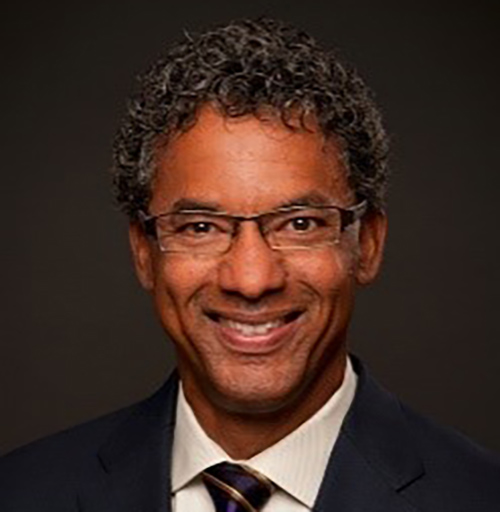Day One: Tuesday, February 18, 2020
08:00
60 minRegistration and Continental Breakfast
09:00
10 minWelcome and Opening Remarks from the Chair
09:10
50 minLaying the Groundwork
Francois Leblanc, Data Scientist, Treasury Board of Canada Secretariat
- Preparing for AI: what to expect
- Data Science: decision support vs automation
- Getting your data house in order
- Building a framework for experimentation
- Focus on your business and the rest will follow
10:00
15 minBreak
10:15
60 minMachine Learning Applied to Cyber Security … This Time is Different?
- Is Machine Learning, when applied to cyber security, just a buzzword that is nearing the end of a hype cycle. Or has a fundamental shift in technology occurred that requires the cyber community to rethink how it delivers cyber security defence
- Quick deep learning overview
- Where is machine learning currently being used within cyber security
- Potential existing applications of machine learning to cyber security issues
- Geopolitical drivers of AI and machine learning adoption
11:15
60 minHow Standards Bridge the Gap Between AI Innovation and Implementation
- Learn about how standards play a critical role in facilitating innovation and addressing the ethical use of artificial intelligence
- Hear about the latest developments in the creation of Canadian standards for the digital space – from data governance to AI and cybersecurity
- Discover partnership and thought leadership that is bridging the divide between public and private sector innovation
- Explore novel use cases modernizing the toolkit for bringing AI products and services to market
- Learn about how Canada is poised to provide an international benchmark for the next generation of AI talent to drive future certification and credentialing programs at the national, regional and international level
12:15
60 minLuncheon
13:15
60 minApplication of AI to Government Finance and Audit
John Craig, Director, Government & Integration Partnerships, MindBridge Ai
- Financial data is being created exponentially, and current financial management and audit processes are failing to detect errors, omissions and fraud, together referred to as financial anomalies
- Today, only specially trained analysts are able to review and detect financial anomalies, creating a resource bottleneck
- AI allows for the democratization of analytics, allowing all financial managers and auditors to leverage analytics without specialized training
- AI is 10x-30x more effective at detecting financial anomalies than current accounting methods
- AI provides a way for finance officers to detect financial anomalies (fraud and mistakes) before the audit process, and for auditors to more rapidly perform audits, and focus in on risky transactions
14:15
60 minAI in the Public Sector – A Source of Uncertainty
The arrival of computers and the Internet changed all aspects of our lives, Artificial Intelligence is similarly swiftly changing our world from predicting products you may want to purchase to analyzing medical test results and predicting.
In response to this pervasive implementation of AI, the Treasury Board Secretariat has developed a Directive on automated decision making that comes into force on April 1, 2020 and which applies to any AI system developed or procured after April 1, 2020. The objective of the TBS Directive is to ensure that automated decision systems are deployed in the federal government in a manner that reduces risk to Canadians and to federal institutions, and in a way that leads to more efficient, accurate, consistent, and interpretable decisions.
- The following techniques are specifically identified as related to AI: rules-based systems, regression, predictive analytics, machine learning, deep learning, and neural nets
- The presentation will touch on how to determine whether AI is a good fit for the problem you have or the operation you are thinking of modifying
- There will be a question and answer session at the end to respond to specific areas of interest to conference participants
15:15
15 minBreak
15:30
60 minBuilding GC AI Clusters on Premises and in the Cloud
- AI clusters require specific “High Performance Computing” IT equipment
- GC users can deploy HPC/AI clusters on premises, in the cloud or at the shared GC HPC centre
- What are the pros and cons of each approach?
- What are the costs and schedules involved?
- What does a ‘standard architecture’ look like for HPC/AI?
16:30
End of Day One
Day Two: Wednesday, February 19, 2020
08:00
60 minRegistration and Continental Breakfast
09:00
10 minWelcome and Opening Remarks from the Chair
09:10
50 minArtificial Intelligence at the Canada Revenue Agency
Shannon Drew, Acting Director General, Research & Innovation Lab, Canada Revenue Agency
- Provide better service and enhancing client experience
- Enable better detection/deterrence of non-compliance
- Increase efficiency of our internal programs and corporate services
10:00
15 minBreak
10:15
60 minThe Almost Mythical Expectations Concerning AI’s Impact on our Future
Gregory Richards, Executive MBA Director and Adjunct Professor, University of Ottawa
- Jobs will disappear
- Robots will be ubiquitous
- Computers will anticipate our needs
- Humans will be augmented by cybertechnology
- Computers will play a major role in solving social problems
In this session, we will explore the “kernels of truth” contained in these expectations and discuss what’s real and what’s likely to emerge
11:15
60 minCloud Foundations for AI in the Department of National Defence
James McIntosh, Senior Cloud Architect, Department of National Defence
- The DND Cloud Journey
- Cloud foundations
- Network – joys and sorrows
- Data – glitches and gotchas
- Path to PROD ( PBMM)
12:15
60 minLuncheon
13:15
60 minAI for Regulatory Compliance: A Shift Towards Risk Prevention
Somaieh Nikpoor, Research Advisor, Labour Program, Government of Canada
- The potential for leveraging AI-powered solutions for regulatory compliance.
- How can AI increase the efficiency and effectiveness of regulators?
- The limits and challenges of using AI for regulatory compliance.
- Lessons learned from Labour Program experiments with AI.
14:15
60 minBeyond the Algorithmic Impact Assessment (AIA): Procuring, Building and Deploying AI in the Public Sector
- The AIA and its Function (hint: Risk Management)
- The Federal Government’s AI Procurement Vehicle
- Acquiring and Building Responsible AI
- Practical Operational AI Considerations
- The Future of AI in the Public Sector
15:15
15 minBreak
15:30
60 minWhat If We Are Not Prepared for AI in the Public Sector?
Ken will build on former research presented at Infonex where he presented the economic and social change that drives increases in cyber-attacks; the dangers of artificial intelligence in control of dangerous nation and non-state leaders; and, the requirement for the audit and IT communities to work as one coordinated team to combat the negative challenges of the 21st Century. This presentation focuses on the consequences if the IT community is not ready for AI and have neglected to deploy due diligence. Such failures are far deeper than most IT professionals realize. His presentation moves from defining what due diligence means though, to example scenarios on the costs and consequences in our era where due to Internet of Things results in overlap between public sector systems and the private sector.
- Why is due diligence in the management and protection of systems and data essential in this era of AI generated cyber attacks?
- Our IT systems are now the backbone that supports confidence in our economic systems. What happens when public confidence fails?
- Public sector systems overlap with private sector systems. What happens when a substantive failure originates in a public system that affects private citizens and corporate profitability?
- Three scenario examples illustrate the challenges that arise from the failure of IT managers to carry out due cyber diligence.
16:30
End of Day Two












